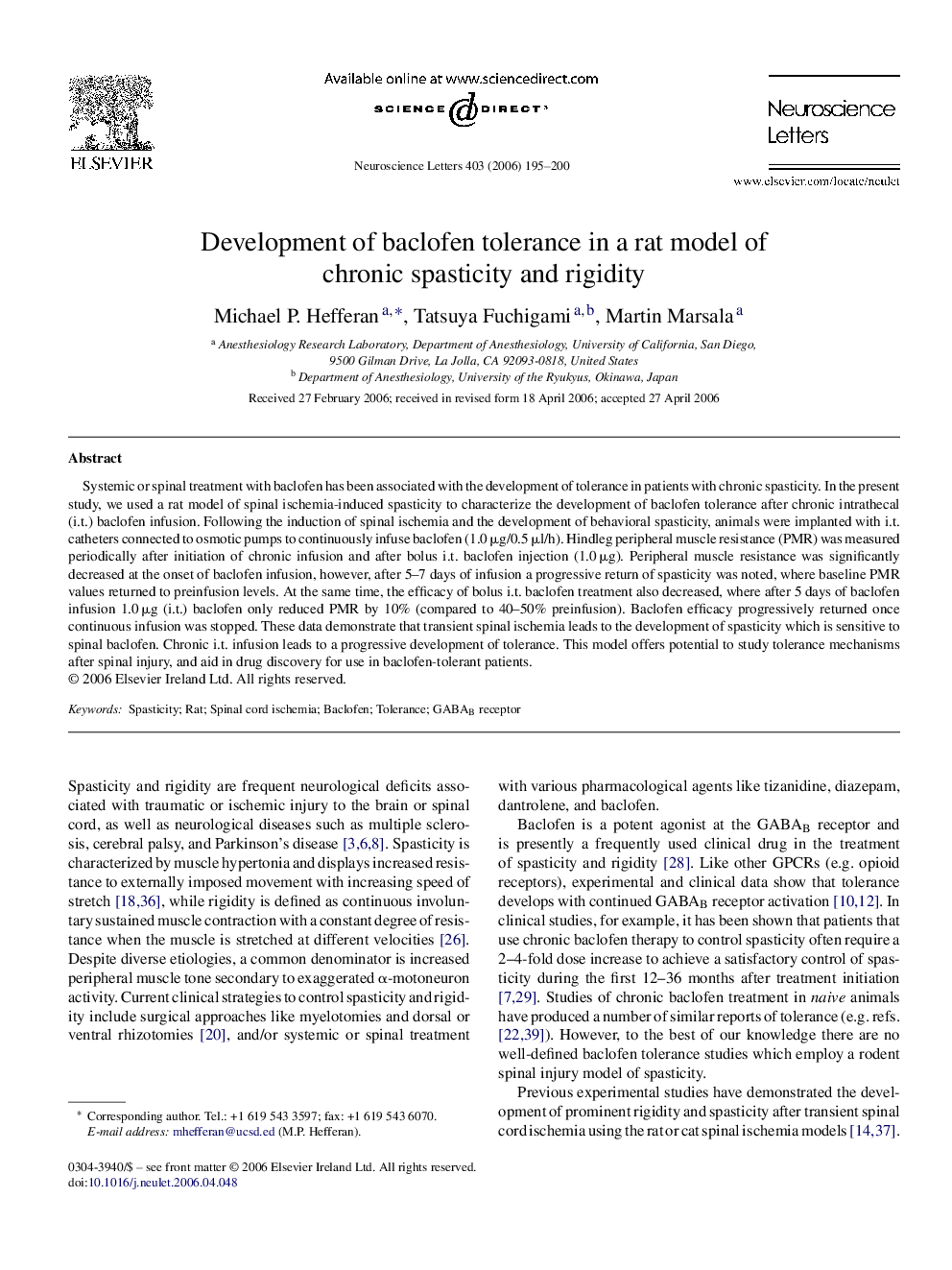| Article ID | Journal | Published Year | Pages | File Type |
|---|---|---|---|---|
| 4350427 | Neuroscience Letters | 2006 | 6 Pages |
Systemic or spinal treatment with baclofen has been associated with the development of tolerance in patients with chronic spasticity. In the present study, we used a rat model of spinal ischemia-induced spasticity to characterize the development of baclofen tolerance after chronic intrathecal (i.t.) baclofen infusion. Following the induction of spinal ischemia and the development of behavioral spasticity, animals were implanted with i.t. catheters connected to osmotic pumps to continuously infuse baclofen (1.0 μg/0.5 μl/h). Hindleg peripheral muscle resistance (PMR) was measured periodically after initiation of chronic infusion and after bolus i.t. baclofen injection (1.0 μg). Peripheral muscle resistance was significantly decreased at the onset of baclofen infusion, however, after 5–7 days of infusion a progressive return of spasticity was noted, where baseline PMR values returned to preinfusion levels. At the same time, the efficacy of bolus i.t. baclofen treatment also decreased, where after 5 days of baclofen infusion 1.0 μg (i.t.) baclofen only reduced PMR by 10% (compared to 40–50% preinfusion). Baclofen efficacy progressively returned once continuous infusion was stopped. These data demonstrate that transient spinal ischemia leads to the development of spasticity which is sensitive to spinal baclofen. Chronic i.t. infusion leads to a progressive development of tolerance. This model offers potential to study tolerance mechanisms after spinal injury, and aid in drug discovery for use in baclofen-tolerant patients.
